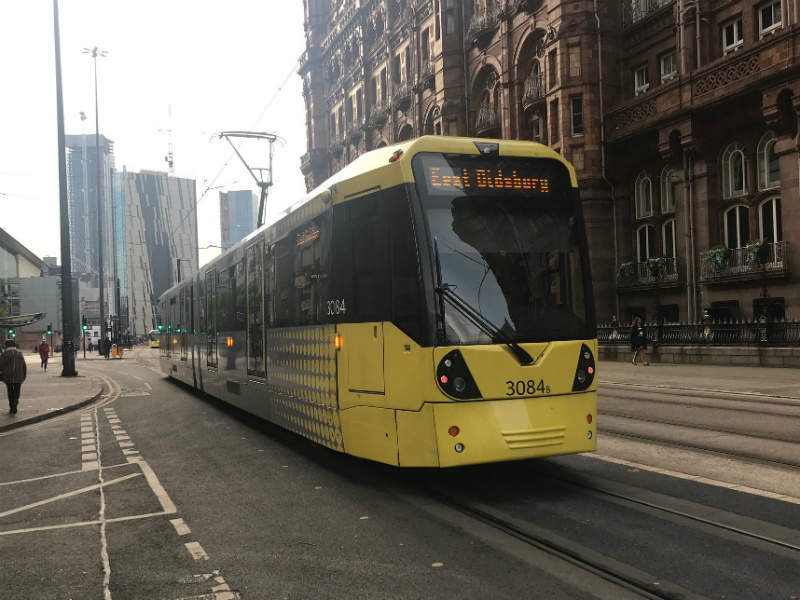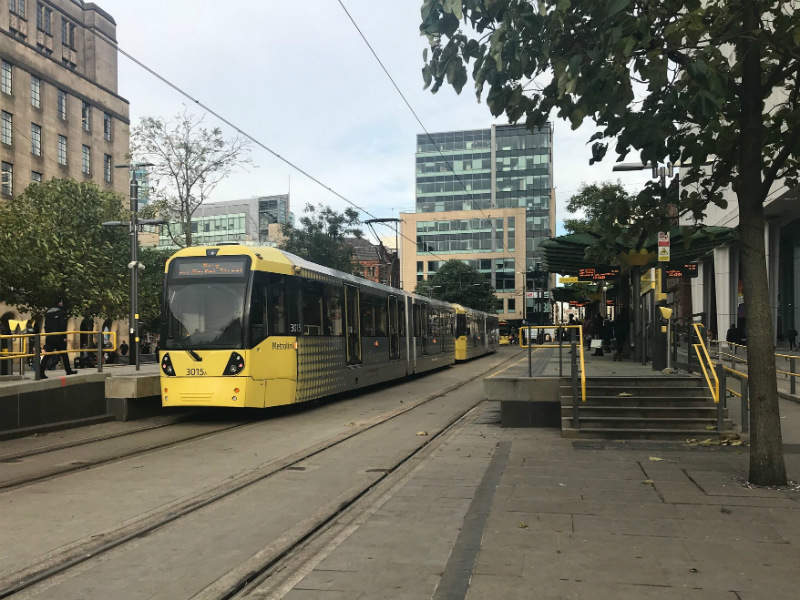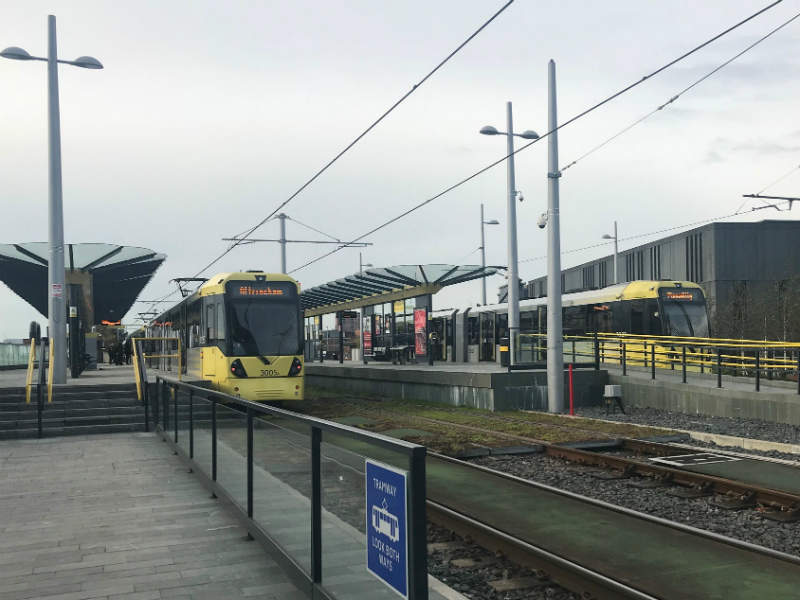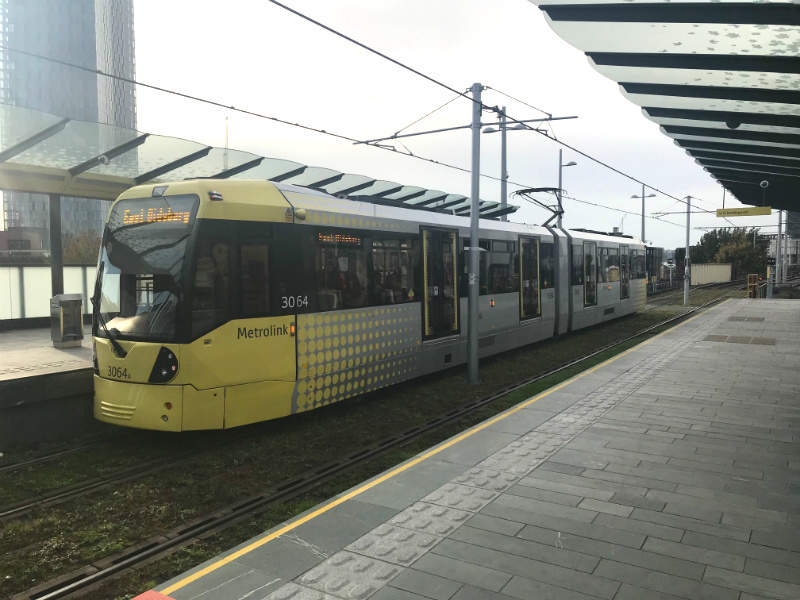Manchester Metrolink is England’s first modern street-operating light rail system.
It includes seven lines that serve the towns of Bury, Altrincham, Eccles, Ashton-under-Lyne, East Didsbury, Manchester Airport, and Rochdale, meeting at Manchester city centre. Metrolink incorporates the features of heavy rail and trams.
The system became the UK’s second operational public tramway after Blackpool when it opened in stages during 1992. In spite of growing passenger numbers and estimated to have reduced car usage by five million journeys a year, Metrolink’s potential became limited by a lack of investment.
Totalling 93km (58 miles), current routes comprise Altrincham-Bury, Altrincham-Piccadilly, Ashton-under-Lyne-Eccles, Bury-Piccadilly, East Didsbury-Rochdale Town Centre, Manchester Airport-Victoria, and MediaCityUK-Etihad Campus.
Details of the Manchester Metrolink project
Metrolink is owned by Transport for Greater Manchester (TfGM), which offers a range of tickets covering public transport services across ten metropolitan authorities. It is operated by a Keolis / Amey consortium under a seven-year contract starting from 15 July 2017.
The initial 31.5km (20 mile) Phase 1 of the Metrolink was planned in the 1980s and constructed beginning in 1990 under a £145m contract. The Phase 2 Eccles line project costing £160m was completed by 2000.
Metrolink is a consortium of GEC Alstom Transportation Projects, John Mowlem, Amec and TfGM.
The GMA Group consortium, consisting of GEC Mowlem, AMEC and GM Buses, was involved in Manchester City Centre’s Service diversions programme. GMA was succeeded by Altram (Manchester) between 1997 and 2007.
Operator Serco was replaced in April 2007 by Stagecoach (RATP Dev) with a ten-year contract, already responsible for Sheffield Supertram.
Manchester Metrolink line expansions
In May 2008, the government gave final approval for the Phase 3a expansion, a £600m project to almost double Metrolink’s length. The longest section is the conversion of the heavy-rail ‘Oldham Loop’ and Rochdale route, leaving the Bury line near Metrolink’s Queens Road operations and maintenance centre.
The extension also included lines to Chorlton in South Manchester and a small section to MediaCityUK from Harbour City. Extensions of the lines to East Didsbury, Manchester Airport, Ashton-under-Lyne, and the town centres of Oldham and Rochdale were approved in May 2009.
The project is part-funded by loans that are due to be repaid over 30 years.
Expansion work carried out by TfGM included the construction of 20 miles of new track and 27 new stops. The tram fleet was expanded by 40 new trams to 72.
In May 2008, the UK Government granted £244m for extensions to Oldham, Rochdale and Chorlton. The government also granted £120.9m for two tram extensions to Ashton and East Didsbury.
TfGM appointed the M-Pact Thales consortium (Laing O’ Rourke, Grant Rail and Thales UK) to design, build and maintain the Phase 3a lines. Construction work started in 2009 and the project was complete in 2013.
Funding for the Phase 3b package of projected Metrolink expansions was approved in 2009. Thi included extending the system into Oldham and Rochdale town centres, as well as to Ashton-under-Lyne from Droyslden. Two new lines were approved running from the St Werburgh’s Road stop to Manchester Airport and East Didsbury.
The trams to MediaCityUK began operating in 2010 while services to Chorlton and Central Park began in early 2011 and to Oldham Mumps in 2012. The Rochdale service was opened in March 2014 and Droylsden line was opened in May 2013.
The extension to East Didsbury included the construction of five stops and was completed in May 2013, while the extension to Ashton included the construction of new track and four stops. The Ashton extension was opened in October 2013.
The extension to Manchester Airport was opened in November 2014. It offers an early morning service running every 20 minutes starting at 3.19am from the Deansgate-Castlefield stop.
Indicative of growing passenger numbers following network expansion, TfGM proposed a ‘Second City Crossing’ to ease congestion on the on-street sections at St Peter’s Square and Piccadilly Gardens through a direct line to Victoria. The first stage of the ‘Second City Crossing’ was opened in December 2015 and it became fully operational in February 2017.
Metrolink Trafford Park Line
The Greater Manchester Combined Authority approved the phased delivery of the Manchester Metrolink Trafford Park Line (TPL) in October 2013.
Construction work on the £350m ($450m) TPL project began in late-2016, with completion scheduled for 2020. The 5.5km-long line will have six tram stops and will run from the Pomona Metrolink stop to intu Trafford Centre.
The new Crumpsall stop will serve as the northern terminus for the TPL. Work on the new Crumpsall tram stop commenced in August 2017 and involves a major transformation, including construction of a new track, a large platform, track level pedestrian crossing and improved stair access.
Infrastructure of Manchester light rail system
The initial Bury to Altrincham via Manchester city centre phase mostly uses former heavy rail track. Creating Metrolink solved a problem shared by two free-standing railways (Manchester Victoria-Bury and Manchester Oxford Road-Altrincham), each being a vital transport link but with outdated non-standard electrification.
A short section of on-street grooved track in the city centre linked the lines via Piccadilly Gardens and created a connection between railway stations Piccadilly and Victoria. The system adopted the tramway standard of 750V DC overhead supply. It features street-running and some reserved stretches.
Prior to access improvements, stations on the former railways were used with little modification beyond restricting the usable platform section to match tram lengths.
To be compatible with the railway-derived stops, 900mm-high platforms were built for the street stops, using ramps or lifts for level boarding of the high-floor tram fleet.
Built at street level but beneath the high-level main line platforms, Piccadilly is the only entirely covered stop on the system. A city centre stop for Shudehill transport interchange was added in 2003.
A £102m emergency track improvement programme necessitated partial temporary closures from May 2007 to replace 20 miles of noisy and rough rails. Funded by TfGM and the UK Department for Transport with Carillion as main contractor, the programme included new ticket machines and stop upgrades.
Rolling stock on Manchester Metrolink
Components of the original 26 T-68 articulated two-car sets came from several suppliers, being assembled at Queen’s Road. Articulated bodies and bogies were assembled at Firema in Milan, Italy, under contract to GEC Alstom. Alstom built the wheels and axles in Salzgitter, Germany. Other components were UK-made, including electric motors made by Alstom, and pantographs provided by Brecknell Willis. Maximum speeds are 80km/h (50mph) on rail alignments and 48km/h (30mph) on street sections.
In 1999, six T-68a vehicles were added for the Eccles extension, indicated by their 2000-series numbers, retractable couplers and covered bogies. Three of the previous vehicles were similarly equipped.
In 2008, RATP Dev announced an 18-month refurbishment programme for the fleet to increase service life. This allowed all trams to work on the Eccles line and improved braking system and traction. Interiors were reworked with improved lighting and security cameras, in addition to changes for disability legislation compliance.
Driven by a pressing need to increase Bury-Altrincham peak capacity, the next generation of trams was delivered through a £17m order for eight Bombardier / Vossloh Kiepe trams from the Flexity Swift family, built at Bautzen, Germany, and Vienna, Austria.
Bombardier and Vossloh Kiepe supplied 77 vehicles to Manchester Metrolink by the end of 2013.
The Queen’s Road depot could not handle the system’s expansion, so a new depot was built near Trafford Park in 2011. Manchester Metrolink’s control room and customer service team were transferred to the new facility in early 2013.
Bombardier Transportation and consortium partner Vossloh Kiepe received an option order to supply 16 Flexity Swift light rail vehicles to the Metrolink system in September 2014, bringing the number of vehicles to 120. The option forms part of a $55m (£34m) contract awarded in 2007.
Bombardier Transportation UK and Kiepe Electric signed a contract in July 2018 for an additional 27 FLEXITY M5000 light rail vehicles. Deliveries are expected to start in February 2020 and continue until June 2021.
Manchester Metrolink signalling and communications
The system is overseen from the Old Trafford control room. The Timperley-Navigation Road-Altrincham section is under Network Rail control, but operating procedures are the same as elsewhere.
All former heavy rail alignments and the section from Manchester Central to the intersection Cornbrook are controlled by absolute block signalling, mainly controlled by two-aspect colour light signals. To reduce problems of reliability and delay relating to the installed signalling system, TfGM is investigated increasing the proportion of the network using ‘line-of-sight’ control.






